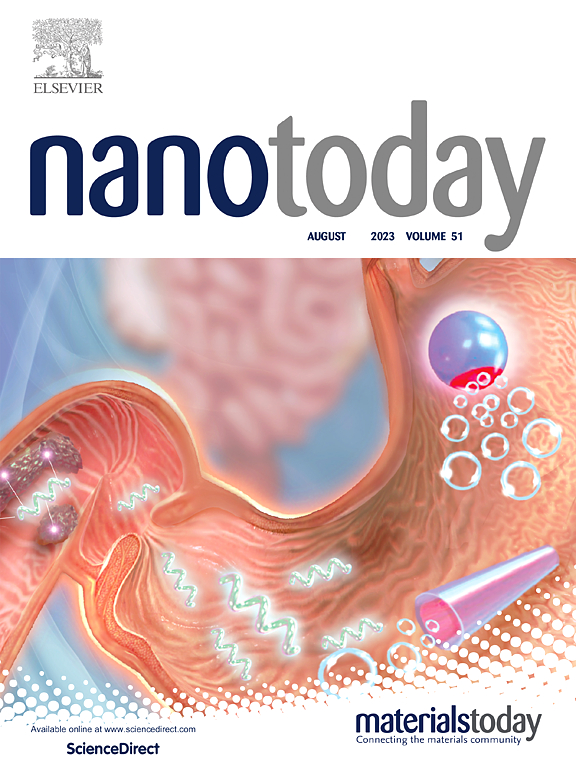Lubricated hydrogel with STING-inhibiting EXOs protect the osteoarthritis by suppressing the senescent microenvironment
IF 13.2
1区 材料科学
Q1 CHEMISTRY, MULTIDISCIPLINARY
引用次数: 0
Abstract
Excessive friction and cellular senescence contribute to osteoarthritis (OA) development. However, synergistic treatments targeting these two causes of OA may have significant implications for OA. In this study, we propose a novel strategy for exosome delivery encapsulated an injectable and lubricated hydrogel to synchronously reduce the excessive friction and the accumulation of aged chondrocytes. A cartilage-targeting peptide HABP-PEG-COLBP was employed to achieve a stable and efficient lubrication. The zwitterions of phosphatidylcholine lipids secreted by the synovial membrane of the joint can adsorb water molecules, forming a hydrated layer around the charge. Moreover, the exosomes derived from bone marrow stem cell (BMSCs) were engineered with a chondrocyte affinity peptide (CAP) in the out membrane and si-STING in the exosome to reshape the senescence microenvironment. Furthemore, the in vivo data showed that the hydrogel/exosome delivery system successfully can alleviate the joint wear and rejuvenate chondrocytes to reverse the development of OA. The HD-T@CAP-Exos-siSTING gels can provide efficient lubrication and potentially alleviate friction-related diseases such as osteoarthritis.
Teaser
An injectable hydrogel delivering exosomes rejuvenates chondrocytes and reduces mechanical stress, presenting a potential osteoarthritis treatment strategy.
含有sting抑制exo的润滑水凝胶通过抑制衰老微环境来保护骨关节炎
过度摩擦和细胞衰老有助于骨关节炎(OA)的发展。然而,针对这两种原因的OA协同治疗可能对OA有重要意义。在这项研究中,我们提出了一种新的外泌体递送策略,包裹在可注射和润滑的水凝胶中,同时减少过度摩擦和老化软骨细胞的积累。采用软骨靶向肽HABP-PEG-COLBP实现稳定有效的润滑。关节滑膜分泌的磷脂酰胆碱脂的两性离子可以吸附水分子,在电荷周围形成水合层。此外,利用外膜中的软骨细胞亲和肽(CAP)和外膜中的si-STING改造骨髓干细胞外泌体,重塑衰老微环境。此外,体内数据显示,水凝胶/外泌体递送系统可以成功减轻关节磨损,使软骨细胞恢复活力,从而逆转OA的发展。HD-T@CAP-Exos-siSTING凝胶可以提供有效的润滑,并可能缓解与摩擦有关的疾病,如骨关节炎。一种可注射的水凝胶递送外泌体使软骨细胞恢复活力并减少机械应力,提出了一种潜在的骨关节炎治疗策略。
本文章由计算机程序翻译,如有差异,请以英文原文为准。
求助全文
约1分钟内获得全文
求助全文
来源期刊

Nano Today
工程技术-材料科学:综合
CiteScore
21.50
自引率
3.40%
发文量
305
审稿时长
40 days
期刊介绍:
Nano Today is a journal dedicated to publishing influential and innovative work in the field of nanoscience and technology. It covers a wide range of subject areas including biomaterials, materials chemistry, materials science, chemistry, bioengineering, biochemistry, genetics and molecular biology, engineering, and nanotechnology. The journal considers articles that inform readers about the latest research, breakthroughs, and topical issues in these fields. It provides comprehensive coverage through a mixture of peer-reviewed articles, research news, and information on key developments. Nano Today is abstracted and indexed in Science Citation Index, Ei Compendex, Embase, Scopus, and INSPEC.
 求助内容:
求助内容: 应助结果提醒方式:
应助结果提醒方式:


